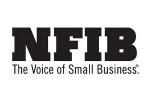CHICAGO — While almost no dry cleaner wants to think about taxes, taking the subject on and educating yourself can save headaches and money down the road.
Barbara Weltman, an attorney and author, specializing in matters pertaining to small businesses and entrepreneurs, and who serves on the advisory board of the Small Business & Entrepreneurship Council, recently spoke on the topic during an online presentation hosted by SCORE. She highlighted what small-business owners should look for during discussions with their tax team.
Weltman pointed out that her presentation was for information purposes only, and that owners should consult with their professional tax advisor or accountants before acting on any of the information presented.
In Part 1 of this series, we examined tax benefits employers could enjoy by hiring certain groups of people, and the role the Employee Retention Credits program might still play in their tax decisions. In Part 2, we looked at two of the most popular employee benefits — health and retirement plans — companies can offer. Today, we’ll conclude by exploring the tax ramifications that come with a company’s equipment and other assets.
Equipment Assets
“When it comes to your equipment, the better it is, the more efficient you can be,” Weltman says. “But when it comes to looking at what you should repair, replace, or add to what you have, there are a variety of ways to handle the tax write-offs for these equipment options.”
Small-business owners need to pay attention to this area of their taxes, she says, because they can save themselves money by keeping track of their equipment needs.
“If you’re making repairs, they’re going to be fully deductible,” she says. “If you lease the equipment, the lease payments are fully deductible. If you purchase, it’s considered a capital investment, and there are special write-off rules.”
While the classic tax strategy is to deduct the cost of equipment through depreciation over time, there are other methods in the tax laws at the moment that owners need to be aware of, Weltman says.
Immediate expense deductions for depreciable business equipment fall under Section 179 of the tax code, which states that the dollar limit in 2023 is $1,160,000. “This applies to a lot of property,” she says. Immediate expense deductions allow business assets to be written off for tax purposes immediately, rather than being depreciated over time.
Eligible property includes tangible personal property such as equipment, vehicles, computers, software and more, and can also be applied to certain improvements to the interior of commercial buildings, such as security and fire systems.
“It applies whether the property that you’re buying is new or used,” Weltman says, “and it also applies whether you financed the purchase in whole or in part. Let’s say you spend $10,000 on a piece of equipment, but you’re financing it and your cost this year is only $1,000. You still get the tax break based on the $10,000.”
There is a catch stating that the business has to be profitable to benefit from first-year expensing, “so if you’re not profitable, this might not be the best of your options,” Weltman says.
A different type of write-off option is known as the “de minimis safe harbor,” where you can treat an item as a supply, rather than equipment, and the item is not added to the balance sheet. This option is good for up to $2,500 per item.
“It’s not an asset, it’s just like a supply,” Weltman says. “Let’s say you’re buying 10 tablets for your 10 employees that are $1,000 apiece. It might make sense because they have a limited life. You’re not going to keep them that long, so you can just treat it as an expense and use this de minimis safe harbor.”
Rolling Stock and Taxes
When it comes to equipment such as cars, trucks and vans, “there are a lot of new laws here and new opportunities,” Weltman says, and decisions to buy or lease have tax ramifications that should be considered.
Weltman points out that the tax credit for new electric vehicles (EVs) in 2023 is the same as it was last year — a maximum of $7,500. “But there’s a new credit amount for used EVs is a vehicle that’s at least has a model year at least two years prior to the current year,” she says, “and that has a $4,000 credit limit.”
These credits do have a “final assembly” requirement, meaning that most of the final assembly has to happen in North America. The National Highway Traffic Safety Administration (NHTSA) has a form on its website (nhtsa.gov) that will take a vehicle identification number (VIN) to verify if a particular EV meets the requirement.
The cost of insurance — higher on EVs than on internal combustion vehicles — is another factor business owners need to weigh when it comes to making the decision on which type of vehicle to purchase.
Starting in 2024, buyers will be able to sell tax credit they would get for an EV, Weltman says, “meaning you can use the credit to reduce your down payment or the cost of the vehicle that you’re financing.”
“If you do want to take advantage of a credit for purchasing an EV in 2023, it’s not just enough to order the car — you have to place it in service. In other words, you have to take delivery of the vehicle. So, you have to start looking and making your choices now if this is something that’s important to you to nail down the tax break.”
Final Thoughts
“It’s early enough in the final quarter to meet with your tax advisor now,” Weltman says, “and pick out which strategies you should pursue between now and the end of the year to minimize your taxes for 2023 and to really position yourself for 2024.”
Adding to the complexity of determining a company’s tax burden is that laws change from year to year — and the laws for 2023 actually aren’t complete yet.
“Be sure to watch what’s happening in Congress,” she says. “There are a lot of (tax) breaks that are in dispute, and some members want to expand certain breaks — there are always new rules coming up. Just keep in mind that the final tax measure wasn’t signed into law until December 29. There’s even talk that this might go into 2024, which has happened before — that wouldn’t be unusual. We’re not done with the tax rules.”
Weltman believes that small-business owners shouldn’t hesitate to find qualified tax and accounting professionals to help them navigate these confusing waters — but shouldn’t just hand them the company’s 2023 numbers and hope for the best.
“We all know that tax rules are complicated, and that’s why it’s so advisable to work with a tax professional,” she says. “But the tax professional may not be suggesting these tax breaks to you — it may be up to you to inquire about whether they make sense for your business.”
For Part 1 of this series, click HERE. For Part 2, click HERE.
Have a question or comment? E-mail our editor Dave Davis at [email protected].





























